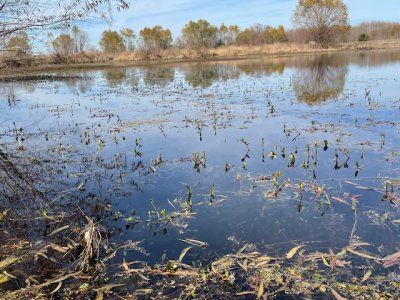this is a picture of what once was a beautiful, full of life, 30 acre oxbow lake off the river above my home lake. Fifteen years ago, We used to bass and bream fish in there, yo-yo for crappie, catch bullfrogs, and duck hunt. It was almost completely open water then - 100 yds across. 8/10 ft deep. Over the last fifteen years, vegetation has completely covered the surface. It starts with invasive alligator weed and other plants colonize the mats of alligator weed - some invasive - some native. The water is still there - ten ft deep - you just cant see it.
Thirty years ago we saw four or five alligators a year and some days fifty or more beaver and nutria - which is another invasive species. Now we might see 20 alligators in a day. Havent seen a beaver in five years. Maybe see one or two nutria a year
it is a well documented fact nutrias consume large amounts of vegetation - to the point of our neighboring state, Louisiana paying out millions of dollars in bounty money. Some interesting stats on the nutria bounty program below. While Louisiana has alligators - no where I have fished, hunted, or bow fished in the coastal marshes have I seen alligators there in nearly the same numbers as what we have here. My opinion - over populated alligators have removed the nutrias and beavers and facilitated an increased growth rate of the aquatic vegetation. There are also multiple beaver dams no longer maintained, and those old beaver dams have eroded away, loosing all that wildlife that flourished in those beaver ponds - including many prime duck hunting areas. Not all invasive species are bad and not all native species are good.
in the past two years, two new invasive plants have been found at at my home lake and supposedly eradicated. I know some of the laws DNR’s have enacted to prevent the movement of invasive species seem asinine like many of their other regulations - but believe me - you dont want your favorite waterways becoming the picture above - or infested with some type of aquatic animal

Nutria Control Program - Nutria.com
A nutria trapper bringing nutria out of the marsh. It is estimated that approximately 16,424 acres of wetlands impacted by nutria as of April 2018. The chance of restoring or even slowing the degradation of coastal marshes in Louisiana will be hampered considerably without sustained reduction...


